Boeing and Airbus have both developed fuselage transporter aircraft based on their commercial aircraft series. These are designed to carry components for their aircraft to central assembly locations. Here, we’ll take a look at both the Boeing Dreamlifter and Airbus Beluga XL, focussing on the differences between the two programs and aircraft.

Global aircraft assembly
Both Boeing and Airbus construct their aircraft components globally. Airbus started out of cooperation between several European manufacturers, and construction remains split between different countries (and now not only in Europe). Boeing brings 787 components together from Italy and Japan for assembly in the US.
Such parts could be sent by sea and land, but it is much faster by air. And these are aircraft manufacturers, after all! Both companies have therefore developed their own transport aircraft. They are also used for other cargo transportation, but their primary focus (and design) is around the movement of aircraft components.




The Boeing Dreamlifter
Boeing launched its first Dreamlifter in 2006, to support the construction of the 787 Dreamliner. It is also known as the Large Cargo Freighter (LCF). With 787 suppliers located in Italy and Japan (as well as across the US), conventional land and sea transportation would not work.
The 787 wings are constructed by Mitsubishi Heavy Industries in Nagoya, Japan. Fuselage sections are constructed in both Japan and Italy, as well as the US. And these are too big for standard shipping containers or the hold of the 747 Freighter.
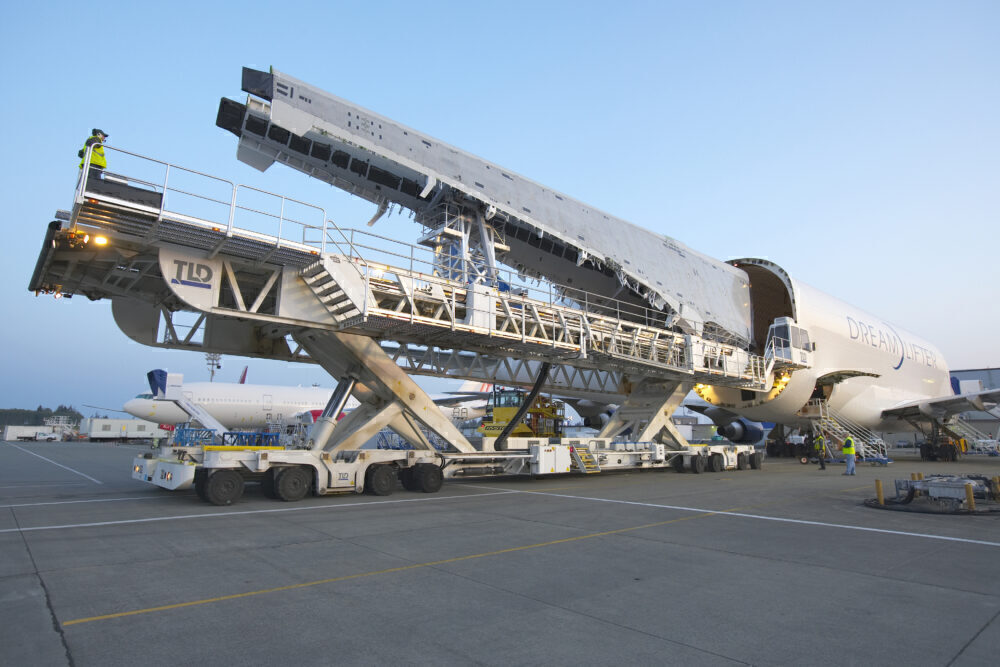



The solution was to develop the Dreamlifter based on the 747-400 airframe. This kept the same basic design and wingspan but altered the fuselage and tail. The largest difference is the bulging fuselage. Less obviously, the fuselage is extended with an additional conical section (to 71.68 meters, up from 70.6 meters). And the tail is increased in height by around 1.5 meters, which aids control of the altered aircraft.
Four Dreamlifters
Rather than build new aircraft, Boeing converted four 747-400s previously used as passenger aircraft. One came from Air China, another from Malaysia Airlines, and two from China Airlines. The reconfiguration was carried out in Taiwan with Evergreen Aviation Technologies Corporation.




The first aircraft was completed in 2006 and entered service in 2007. The fourth was in service in 2010. They were initially operated by Seattle-based Evergreen International Airlines, and this switched to Atlas Air in 2010 (Evergreen ceased operations in 2013).
The Dreamlifter swing door
A critical difference between the Dreamlifter and the Beluga is their cargo access. The Beluga has an opening front nose door similar to that seen on the 747, but above the cockpit area for full fuselage access. The Dreamlifter has a more unusual swing tail door.




This was not something done before on Boeing’s commercial aircraft and proved quite a challenge. The door had to remain secure and latched in different operating environments and transmit the load correctly between the fuselage and the tail. The solution is a hydraulically controlled door (which requires ground support to operate) with a proprietary 21 bolt locking system.
With such a door, the APU was also removed (to avoid running fuel lines through the door hinges). This leaves the Dreamlifter reliant on an external supply for engine start.
Loading is interesting too. It uses a device known as a DBL, a specialized device constructed by the French company TLD. At 35.96 meters long, it holds the Guinness World Record title of ‘longest aircraft loader in the world!’
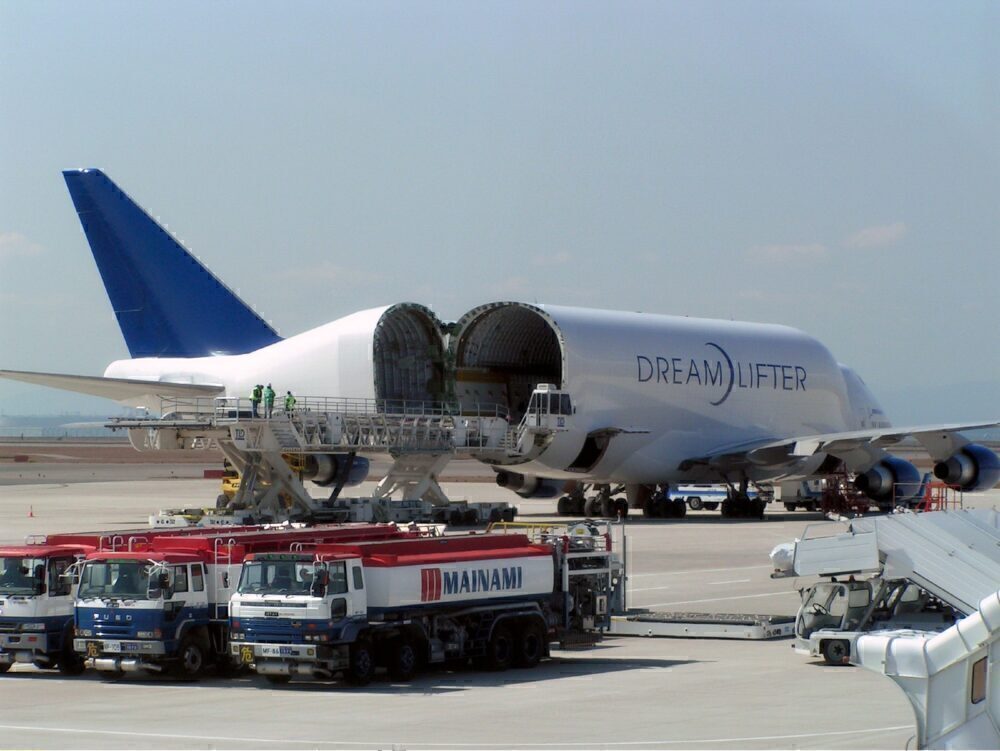



The Airbus Beluga XL
Airbus launched the Beluga XL in 2020, with its main objective to carry parts for the A350. Like the Dreamlifter, it came about to meet a specific need to move components. In particular, it is designed to take A350 wings – both of them. Its predecessor, the Beluga, would only be capable of carrying one wing.
Like the Dreamlifter, the Beluga XL has a limited route map. This includes Broughton in the UK, where wings are produced, as well as other sites in France, Germany, Spain, and China. Getafe in Spain was added to the route network in August 2020.
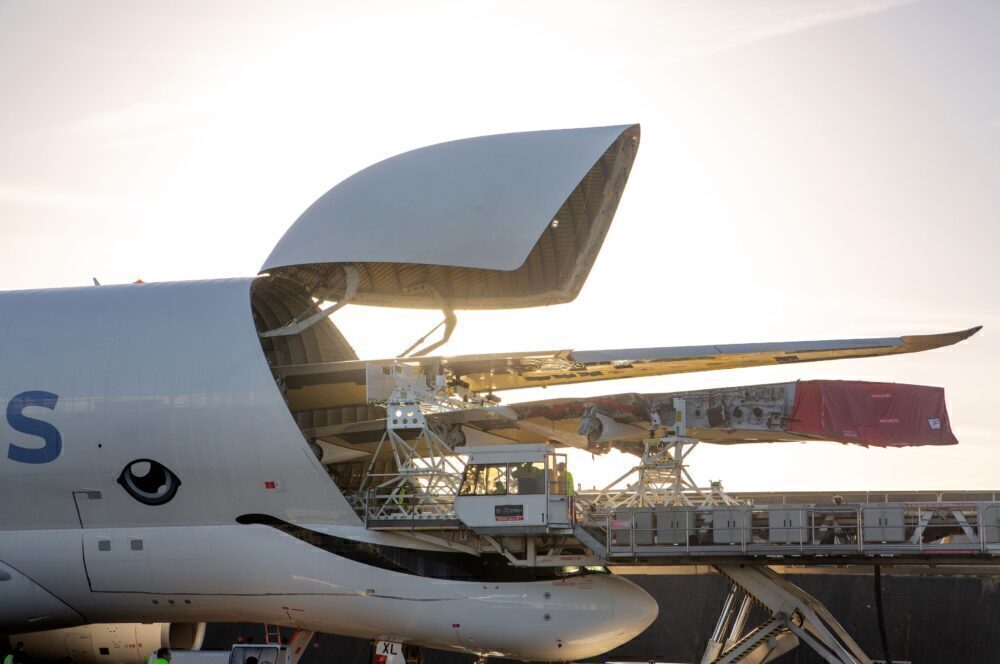



Modifications to the A330
The Beluga XL is based on a modified A330-200 airframe and is named for its distinctive smiling whale appearance. Again there are several modifications made to this. It uses the reinforced floor structure from the A330-200 freighter and a combination of designs from the A330-200 and A330-300 for the main fuselage. The wingspan is unchanged, but the tail is larger, and there are ventral fins added to the tail assembly.




It is loaded through an upwards opening hinged cargo door at the front of the aircraft. The A330 cockpit is moved lower, below the fuselage floor. This allows the door to open without affecting the electronic and flight control systems. This system is also used for its predecessor, the Beluga. But it was a limitation of the earlier Super Guppy (and resulted in much longer turnaround times).
There will be six Beluga XL aircraft
There will be a larger fleet of Beluga XL aircraft than Dreamlifters, with six planned to enter service by 2024. The first aircraft was delivered in January 2020. The third came in late October 2020.
They will continue to operate alongside the existing Beluga fleet. Airbus moves a lot more than just A350 parts around Europe, and this will continue.




Longer history for Airbus
Airbus’ fuselage transporters go back further than Boeing’s. The Beluga XL was only introduced in 2020. Before that, Airbus used the Beluga and the Super Guppy, going right back to its founding.
Airbus introduced the Super Guppy aircraft in 1972. This was a fleet of four modified Boeing Stratocruisers and were used to transport parts for Airbus’ first aircraft, the A300. Right from the start, Airbus’ operation was decentralized, with the construction of components taking place in several countries.
The Super Guppy was replaced by the Beluga, with the need for larger parts to be transported when the A340 was developed. One aircraft remains in service with NASA.
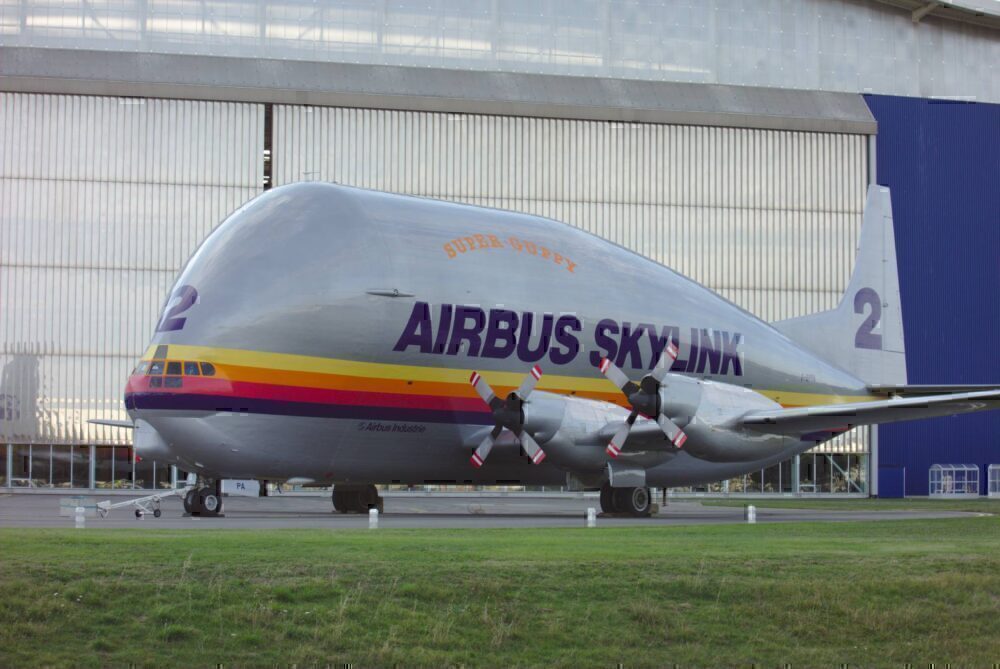



The Belugas was introduced in 1995. It was developed based on the A300-600 airframe, with a significantly enlarged fuselage for cargo transport. Five Beluga aircraft entered service between 1995 and 1999.




The Dreamlifter vs Beulga
The two aircraft have several similarities. Both were designed to meet the needs of specific transportation and to take advantage of existing airframe designs. They have worked well to speed the production of aircraft, compared to ground transportation.
Airbus has had such transporters for much longer due to its history of construction across different European locations from the 1970s. And it has always had a larger transporter fleet.
There are also several structural and equipment differences other than size. Most significantly, the different ways each manufacturer has approached cargo access to the fuselage. These methods are very different but have both required some complex engineering and bespoke development.
Which aircraft is bigger?
The pure size of these aircraft is not the most important part. They are each designed to meet the specific transportation requirements of different aircraft components. But of course, one has to be bigger than the other!
For pure volume, the Beluga XL is the leader. It offers a fuselage volume of 2,209 cubic meters. The Dreamlifter comes in behind at 1,840 cubic meters. For completeness, the Beluga comes in behind both, with a volume of 1,500 cubic meters.




But for body length, the Dreamlifter wins. It is a stretched version of the 747-400 fuselage with a total length of 71.68 meters. The Beluga XL has a length of 63.1 meters. The new 747-8 beats both of them, though, and the upcoming 777-9 will reach an impressive 76.7 meters.
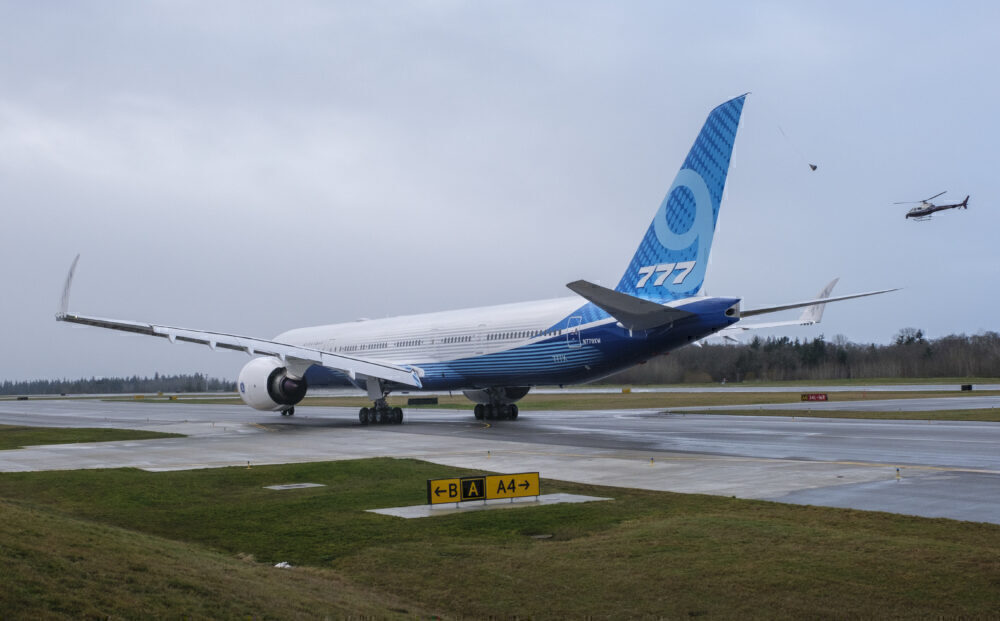



What about payload?
Size isn’t everything – weight matters as well for a freighter. The Dreamlifter gets ahead here, largely due to its basis on the four-engine 747-400. It offers a maximum payload of 113,400 kg. The Beluga XL has a maximum payload of 50,500 kg.
And don’t forget as well the role of the Antonov An-225 as a large transporter. This does not have the fuselage volume of the Beluga or Dreamlifter but can carry a payload of around 250,000 kilograms.




Which has been used more during the pandemic?
Most airlines and aircraft types have suffered during the slowdown in 2020 and 2021 – the Dreamlifter and Beluga are no exception. Simple Flying took a detailed look at this recently, with the help of data from RadarBox.com. Both aircraft saw a significant drop in utilization, as you would expect with both manufacturers slowing production.
Overall, the Dreamlifter has done slightly better, with a demand drop of around 40%. The Beluga experienced around a 50% drop. This is not all flying for carrying Boeing and Airbus components. They have also found other uses, such as Boeing using its Dreamlifter for medical transport missions and various PPE deliveries.
The Dreamlifter and Beluga XL are great aircraft, serving a vital role for Boeing and Airbus. With small fleets and limited routes, it’s unusual to see them in operation as well. Feel free to discuss their design and history, or your experiences of them, in the comments.



